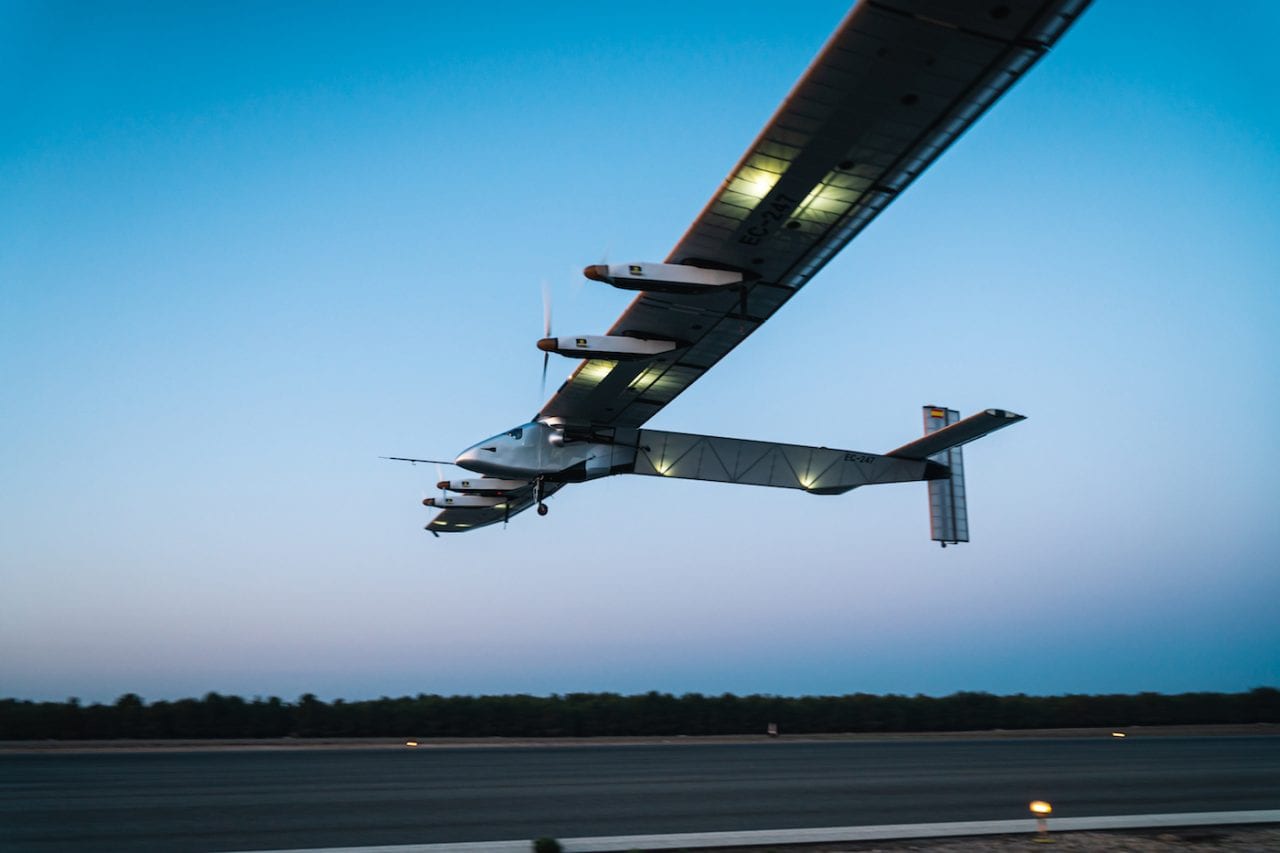
The 236-foot wingspan of the modified Solar Impulse 2 aircraft operated by Skydweller Aero completed its latest flight test in Albacete, Spain on Sunday, April 18. (Skydweller Aero)
Skydweller Aero’s latest flight test of a modified solar-powered aircraft will provide the real-world data necessary for the U.S.-Spanish startup’s engineers to start developing and testing their proprietary autonomous flight software.
Established in 2019 following the acquisition of Swiss nonprofit Solar Impulse’s Solar Impulse 2 aircraft—which circumnavigated the globe in 2016— Skydweller is headquartered in Oklahoma, with offices in the Washington D.C. region and a flight test facility in Albacete, Spain, roughly two hours south of their engineering operations in Madrid. During the two-and-a-half-hour optionally-piloted flight demonstration in Albacete, Skydweller’s engineering team completed initial validation of their new flight hardware and autopilot’s ability to initiate and manage the aircraft control, actuation, and sensor technology systems.
A pilot was in the cockpit of the Solar Impulse 2, working in tandem with another operator who controlled the movements of the aircraft remotely from the ground.
Skydweller CEO Robert Miller told Aviation Today that their autonomous solar-powered aircraft could serve a number of future missions, including intelligence, surveillance, and reconnaissance (ISR) in densely populated areas. Hovering at nearly 16,000 feet during the flight test, the heavily modified Solar Impulse 2’s latest flight was the first completed after major aircraft modifications, according to Miller.
“System identification inputs were used at multiple altitudes to characterize the stability derivatives and control effectiveness and coupling to update and refine mathematical models. The aircraft has significant aeroelastic effects and so the location-specific dynamics of the future INS location was investigated,” Miller said in emailed responses to questions.
The aircraft is being designed to meet FAA Part 23 certification requirements, although the future goal for Skydweller is to operate the aircraft completely autonomous. Miller said he believes commercialization of the technology could come within the “not-too-distant future.”
A long-term goal for the modified Solar Impulse 2 is to become capable of autonomous solar-powered flight for up to 90 days, depending on latitude, according to Miller. Inputs and system responses observed during the flight test will be used to characterize the behaviors required to enable closed-loop control.

Skydweller Aero’s engineering team will use data captured from the aircraft’s auto pilot system to further the development of their autonomous flight software. (Skydweller Aero)
“One of the interesting elements of the platform arises from its low true airspeed and high wingspan—low yaw rates yield to non-linear roll response due to differences in dynamic pressure. We also verified end-to-end line of sight verification systems in final installed configuration,” Miller said.
While a pilot sat in the cockpit of the aircraft throughout the flight, the ground-based operator used a ground control computer and air-to-ground radios to send commands to the autopilot system. The pilot accepted these commands, and they were executed by the system automatically, according to Miller.
On the ground, the remote operator used scripted and user-configurable test commands, while onboard the pilot’s cockpit display showed those commands and tracked the aircraft’s response in real-time.
“Our sole focus right now is the evolution of this aircraft. We are slowly installing and testing our autonomous software systems,” Miller said. “The presence of a pilot is actually what grants us the flexibility, within the regulatory framework, to continually augment/enhance the capability of the aircraft rapidly. The goal, though, is indeed accurate. We will have the pilot monitor an increasingly capable system that is eventually able to execute a flight, from take-off to landing, without any pilot actions. At which point, we will remove the cockpit and begin our fully autonomous flight test campaign.”
With 800 lbs of payload capacity, the aircraft can carry more radar and camera equipment than an MQ-1 Predator, though Miller and co-founder John Parkes see the aircraft serving the emergency air medical market as well.
“We cannot speak to current or prospective contracts; however, we have been approached by many military organizations and potential commercial partners to discuss how we could best serve them. There is a clear need for this type of technology, and there has been for quite some time,” Miller said.